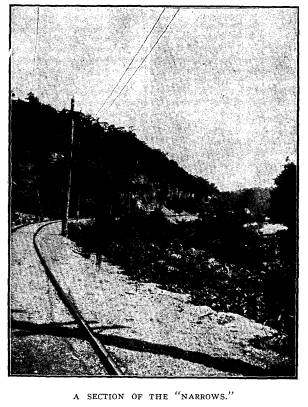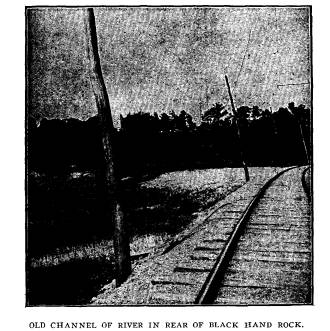Ohio History Journal
The Black Hand. 449
doubtless be a matter of regret to
everyone that the railroad
has recently changed the name of the
station, and the brakeman
no longer calls out Black Hand, but
Toboso. It is to be hoped
that commercial as well as historic
interest will induce the new
electric line to perpetuate the name of
Black Hand.
In a beautiful introduction to her
legend, among other
things, Mrs. Gebhart says: "The
Indian legend pertaining to this
relic of a prehistoric race was told me
by Colonel Robert David-
son, who settled in Newark in 1808.
There were many Indians
there at that time, and from them he
doubtless heard it. They
lingered long in the vicinity. I
remember being carried in his
arms, probably about 1835, to see the
party who had erected
their wigwams and camped in the public
square at Newark. I
remember with especial distinctness, one
squaw who carried a
papoose, Indian fashion, on her
back. Its black bead-like
eyes seemed to view me as curiously as I
on my part viewed it
from that coign of vantage a father's
protecting arm."
Hon. Alfred Kelly was one of the canal
commissioners under
whose supervision the canals of Ohio
were made. He probably
heard the legend while engaged in this
work. His rendering
has never been published. A manuscript
copy is in the pos-
session of his daughter, Mrs. Francis
Collins, of Columbus, who
has kindly consented to its publication
here.
THE BLACK HAND.
R. E. CHAMBERS, M. D.
Some time during the fifties, articles
appeared from time to
time under the nom-de-plume of
"Black Hand." These were
devoted to a history of the "boys
and girls of 1826." They were
pleasing and readable, and were very
lavish in extolling the at-
tractive traits of character that
adorned the developing woman-
hood and manhood of that period.
At the conclusion of his article he asks
the question, "Who
put that hand on the rock ?" or who
painted the hand on the rock?
- for it had the appearance of having
been painted.
Vol. XIII-29.

